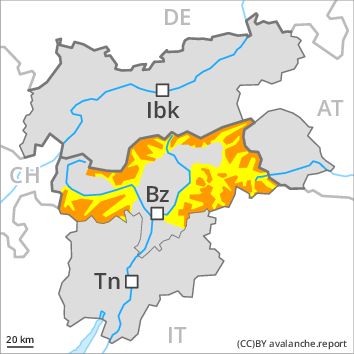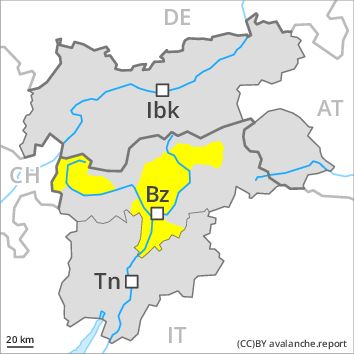Regions
Gröden Dolomites, Texel Mountains, Prags Dolomites, Sexten Dolomites, Durreck Range, Western Rieserferner Mountains, Western Deferegger Alps, Ortler Range, Schnals Ridge, Southern Stubai Alps, Ulten Valley, Southern Zillertal Alps and High Tauern

Danger level
Avalanche Problem
Wind-drifted snow above 2200m, N-NE-E-SE-S-SW-W-NW
Persistent weak layer, N-NE-E-SE-S-SW-W-NW

Fresh and older wind slabs require caution.
Avalanches can be released in the old snowpack and reach dangerously large size. The avalanche prone locations are to be found in particular at transitions from a shallow to a deep snowpack above approximately 2200 m and in areas where the snow cover is rather shallow. These places are quite prevalent and are difficult to recognise. In addition the no longer entirely fresh wind slabs should be taken into account. The current avalanche situation calls for caution and restraint. Slight increase in danger of dry and wet avalanches as a consequence of warming during the day and solar radiation. As the penetration by moisture increases individual gliding avalanches and moist snow slides are possible below approximately 2600 m.
Snowpack
In some cases the wind slabs have bonded still only poorly with each other and the old snowpack. Wind slabs are clearly recognisable to the trained eye. They are widespread. Faceted weak layers exist in the old snowpack, in particular in areas where the snow cover is rather shallow as well as adjacent to ridgelines above approximately 2200 m.
Tendency
Slight decrease in danger of dry avalanches.
